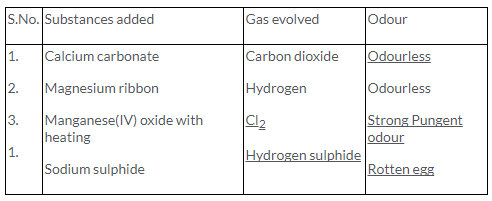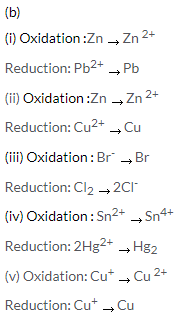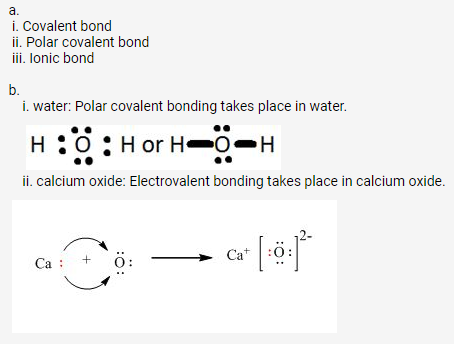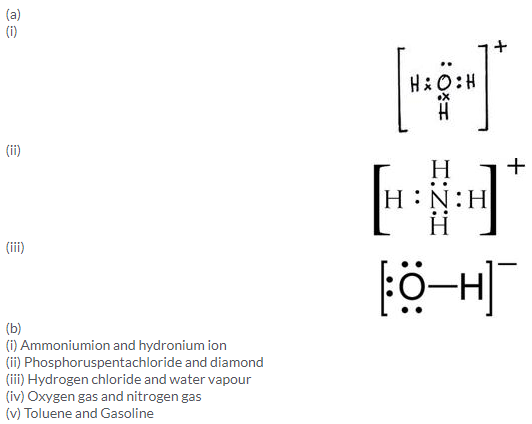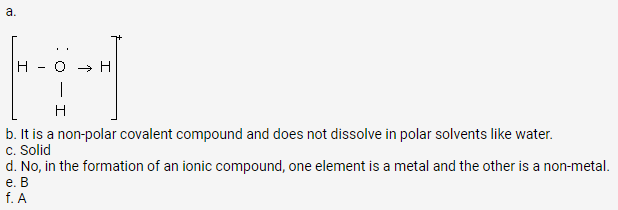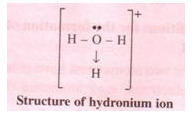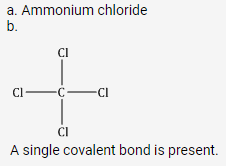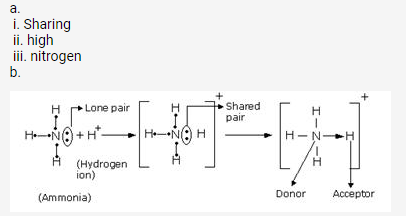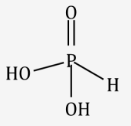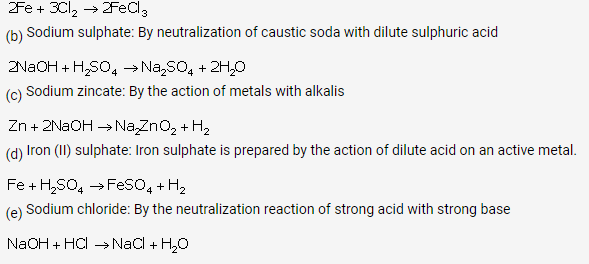Selina Concise Chemistry Class 10 ICSE Solutions Periodic Table, Periodic Properties and Variations of Properties
APlusTopper.com provides step by step solutions for Selina Concise ICSE Solutions for Class 10 Chemistry Chapter 1 Periodic Table, Periodic Properties and Variations of Properties. You can download the Selina Concise Chemistry ICSE Solutions for Class 10 with Free PDF download option. Selina Publishers Concise Chemistry for Class 10 ICSE Solutions all questions are solved and explained by expert teachers as per ICSE board guidelines.
Download Formulae Handbook For ICSE Class 9 and 10
ICSE SolutionsSelina ICSE Solutions
Selina ICSE Solutions for Class 10 Chemistry Chapter 1 Periodic Table, Periodic Properties and Variations of Properties
Exercise Intext 1
Solution 1.
(a) The modern periodic law states that “The properties of elements are the periodic functions of their atomic number.” Henry Moseley put forward the modern periodic law.
(b) A tabular arrangement of the elements in groups (vertical columns) and periods (horizontal rows) highlighting the regular trends in properties of elements is called a Periodic Table. Modern Periodic table has 7 periods and 18 groups.
Solution 2.
Valency is the combining capacity of the atom of an element. It is equal to the number of electrons an atom can donate or accept or share. It is just a number and does not have a positive or negative sign.
Group 1elements have 1 electron in their outermost orbital, while Group 7 elements have 7 electrons in their outermost orbital.
Valency depends on the number of electrons in the outermost shell (i.e. valence shell).
If the number of electrons present in the outermost shell is 1, then it can donate one electron while combining with other elements to obtain a stable electronic configuration.
If the number of electrons present in the outermost shell is 7, then its valency is again 1 (8 – 7 = 1) as it can accept 1 electron from the combining atom.
In a given period, the number of electrons in the valence (outermost) shell increases from left to right. But the valency increases only up to Group 14, where it becomes 4, and then it decreases, that is, it becomes 1 in Group 17.
Solution 3.
The horizontal rows are known as periods and vertical columns in the periodic table are known as groups.
Solution 4.
Periodicity is observed due to the similar electronic configuration..
Solution 5.
(i) Though the number of shells remain the same, number of valence electrons increases by one, as we move across any given period from left to right.
(ii) While going from top to bottom in a group, the number of shells increases successively i.e. one by one but the number of valence electrons remains the same.
Solution 6.
(a) Elements in the same group have equal valency.
(b) Valency depends upon the number of valence electrons in an atom.
(c) Copper and zinc are transition elements.
(d) Noble gases are placed at the extreme right of the periodic table.
Solution 7.
(a) Sodium and Potassium
(b) Calcium and Magnesium
(c) Chlorine and Bromine
(d) Neon and Argon
(e) Iron and Cobalt
(f) Cerium and Europium
(g) Uranium and Neptunium
Solution 8.
(a) The properties that reappear at regular intervals, or in which there is a gradual variation at regular intervals, are called periodic properties and the phenomenon is known as the periodicity of elements.
(b) The third period elements, Na, Mg, Al, Si, P and Cl summarize the properties of their respective groups and are called typical elements.
(c) The elements of the second period show resemblance in properties with the elements of the next group of the third period leading to a diagonal relationship. Such elements are called bridge elements.
Solution 9.
Beryllium and magnesium will show similar chemical reactions as calcium. Since these elements belong to same group 2 and also have two electrons in their outermost shell like calcium.
Solution 10.
- Metals: Lithium, Beryllium, Sodium, Magnesium, Aluminium, Potassium, Calcium
- Metalloids: Boron, Silicon
- Non-metals: Hydrogen, Helium, Carbon, Nitrogen, Oxygen, Fluorine, Neon, Phosphorous, Sulphur, Chlorine, Argon
Solution 11.
(i) Properties: Non-metallic, highest electronegativity in the respective periods, highest ionisation potentials in the respective periods, highest electron affinity in the respective periods
(ii) Salt-forming; hence, the common name is halogens.
Solution 12.
The main characteristic of the last element in each period of the periodic table is they are inert or chemically unreactive.
The general name of such elements is ‘Noble gases’.
Solution 13.
According to atomic structure, the number of valence electrons determines the first and the last element in a period.
Solution 14.
| Elements | Valency | Formula of oxides |
| Na | 1 | Na2O |
| Mg | 2 | MgO |
| Al | 3 | Al2O3 |
| Si | 4 | SiO2 |
| P | 5 | P2O5 |
| S | 2 | SO2 |
| Cl | 1 | Cl2O |
Solution 15.
(i) Noble gases
(ii) Representative elements
(iii) Transition elements
(iv) Halogens
(v) Alkaline Earth metals
Solution 16.
(i) 30
(ii) It belongs to group 12 and fourth period.
(iii) It is a metal.
(iv) The name assigned to this group is IIB.
Solution 17.
(i) Electronic configuration of P: 2,8,5
(ii) 15th Group and 3rd Period.
(iii) Valency of P = 8 – 5 = 3
(iv) Phosphorus is a non-metal.
(v) It is an oxidizing agent.
(vi) Formula with chlorine = PCl3
Exercise Intext 2
Solution 1.
Atomic size is the distance between the centre of the nucleus of an atom and its outermost shell.
It’s measured in Angstrom and Picometre.
Solution 2.
(i) The atomic size of an atom increases when we go down a group from top to bottom.
(ii) It increases as we move from right to left in a period.
Solution 3.
Second Period: Fluorine <Neon< Oxygen< Nitrogen < Carbon < Boron< Beryllium < Lithium.
Third Period: Chlorine < Argon < Sulphur < Phosphorus < Silicon < Aluminum < Magnesium < Sodium.
Solution 4.
(i) The size of Neon is bigger compared to fluorine because the outer shell of neon is complete(octet).As a result, the effect of nuclear pull over the valence shell electrons cannot be seen. Hence the size of Neon is greater than fluorine.
(ii) Since atomic number of magnesium is more than sodium but the numbers of shells are same, the nuclear pull is more in case of Mg atom. Hence its size is smaller than sodium.
Solution 5.
(i) An atom is always bigger than cation since cation is formed by the loss of electrons; hence protons are more than electrons in a cation. So the electrons are strongly attracted by the nucleus and are pulled inward.
(ii) An anion is bigger than an atom since it is formed by gain of electrons and so the number of electrons are more than protons. The effective positive charge in the nucleus is less, so less inward pull is experienced. Hence the size expands.
(iii) Fe 2+ is bigger than Fe3+ since Fe 2+ has more number of electrons than Fe3+ and hence the inner pull by nucleus is less strong on it as compared to the pull on Fe3+.
Solution 6.
- In increasing metallic character: F < O < N < C < B < Be < Li
- In decreasing non-metallic character: Cl > S > P > Si > Al > Mg > Na
Solution 7.
(i) Across a period, the chemical reactivity of elements first decreases and then increases.
(ii) Down the group, chemical reactivity increases as the tendency to lose electrons increases down the group.
Solution 7.
The periodic variation in electronic configuration as one move sequentially in increasing order of atomic number produces a periodic variation in properties.
As the elements are arranged in increasing order of atomic number, the metals with tendency to lose electrons are placed on the left and the metallic character decreases from left to right and increases down a group and non-metals with tendency to gain electrons are placed automatically on the right and the non-metallic character increase across a period and decreases down a group.
Solution 8.
(i) The metallic character decreases as we go from left to right in a period.
(ii) It increases as we go down a group.
Solution 9.
(i) The element from the 17th group has 7 electrons in its outermost shell.
(ii) The name of the element is chlorine.
(iii) Chlorine belongs to the halogen family.
(iv) The element has 13Y27 three electrons in its outermost shell which it can donate; hence, its valency is three. While the valency of chlorine is 1. Thus, 13Y27 which is Aluminium can donate three electrons, and chlorine can accept 1 electron to get the stable electronic configuration.
Therefore, the formula of the compound is AlCl3.
Solution 10.
(i) Yes, these elements belong to the same group but are not from the same period.
(ii) We know that m.p. decreases on going down the group. Hence, from the above table, the elements can be ordered according to their period as follows:
| Elements | B | C | A |
| m.p. | 180.0 | 97.0 | 63.0 |
The metallic character increases as one moves down the group.
Hence, the order of the given elements with increasing metallic character is as follows:
B
Solution 10.
The melting and boiling points of metals decrease on going down the group.
Example: Observe the trend in group 1 elements given in the following table:
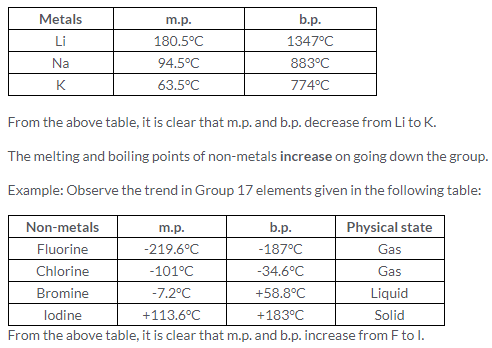
Solution 11.
Correct option: (ii) Potassium
Solution 12.
Correct option: (iii) I–
Solution 13.
(i) Barium will form ions most readily as the outermost valence electron which experiences the least force of attraction by positively charged nucleus can be given away readily to form cations.
(ii) All Group II elements have two valence electrons.
Solution 14.
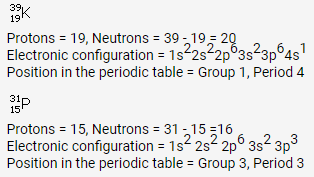
Solution 15.
- Group = 1
- Period = 4
- Valence electrons = 1
- Valency = 1
- Metal
Solution 16.
(i) It belongs to group II and has 2 valence electrons, so it is a metal.
(ii) Barium is placed below calcium in the group. Since the reactivity increases below the group, barium is more reactive than calcium.
(iii) It needs to lose 2 valence electrons to complete its octet configuration, so its valency is 2.
(iv) The formula of its phosphate will be Ba3 (PO4)2.
(v) As we move from left to right in a period, the size decreases, so it will be smaller than caesium.
Solution 17.
Sincethe size of the atom increases down the group, the ionic radii will also increase. Hence, the order of increasing atomic numbers in the group is Z < Y < X.
Solution 18.
(i) All groups do not contain both metals and non-metals. Group I and II contain only metals.
(ii) Atoms of elements in the same group have same number of valence electrons. They have same number of electrons present in their outermost shell.
(iii) The non-metallic character increases across a period with increase in atomic number. This is because across the period, the size of atom decreases and the valence shell electrons are held more tightly.
(iv) On moving from left to right in a period, the reactivity of elements first decreases and then increases, while in groups, chemical reactivity of metals increases going down the group whereas reactivity of non-metals is decreases down the group.
Solution 19.
(i) A metal of valency one = 19
(ii) A solid non-metal of period 3 = 15
(iii) A rare gas = 2
(iv) A gaseous element with valency 2 = 8
(v) An element of group 2 = 4
Solution 20.
(i) The properties of the elements are a periodic function of their atomic number.
(ii) Moving across a period of the periodic table, the elements show increasing non-metallic character.
(iii) The elements at the bottom of a group would be expected to show more metallic character than the elements at the top
(iv) The similarities in the properties of a group of elements are because they have the same number of outer electrons.
Solution 21(i).
An anion is formed by the gain of electrons. In the chloride ion, the number of electrons is more than the number of protons. The effective positive charge in the nucleus is less, so the less inward pull is experienced. Hence, the size expands.

Solution 21(ii).
The inert gas argon is the next element after chlorine in the third period.
In a period, the size of an atom decreases from left to right due to an increase in nuclear charge with an increase in the atomic number. However, the size of the atoms of inert gases is bigger than the previous atom of halogen in the respective period. This is because the outer shell of inert gases is complete. They have the maximum number of electrons in their outermost orbit; thus, electronic repulsions are maximum. Hence, the size of the atom of an inert gas is bigger.
Solution 21(iii).
Ionisation potential of the element increases across a period because the atomic size decreases due to an increase in the nuclear charge, and thus, more energy is required to remove the electron(s).
Solution 21(iv).
Alkali metals are strong reducing agents because they lose electrons easily to complete their octet.
Solution 22(i).
Neon (Atomic number = 10)
Electronic configuration = 1s22s22p6
Solution 22(ii).
Electronic configuration = 2, 8, 3
Hence, atomic number = 13
The element having atomic number 13 is Aluminium.
Solution 22(iii).
The element has a total of three shells; hence, the element belongs to the third period.
Five valence electrons indicate that the element belongs to the fifth group (VA).
Hence, the element is phosphorus.
Solution 22(iv).
The element has a total of four shells; hence, the element belongs to the fourth period.
Two valence electrons indicate that the element belongs to the second group (IIA).
Hence, the element is calcium.
Solution 22(v).
Twice as many electrons in its second shell as in its first shell indicates electronic configuration 1s22s2.
From the electronic configuration, the total number of electrons is 4.
We know that
Number of electrons = Number of protons = Atomic number
The element with atomic number 4 is beryllium.
Solution 23(i).
Period 1:
Number of elements = 2
Hydrogen, helium
Period 2:
Number of elements = 8
Lithium, beryllium, boron, carbon, nitrogen, oxygen, fluorine, neon
Period 3:
Number of elements = 8
Sodium, magnesium, aluminium, silicon, phosphorus, sulphur, chlorine, argon
Solution 23(ii).
A common feature of the electronic configuration of the elements at the end of Period 2 and Period 3 is that the atoms have 8 electrons in their outermost shell.
Solution 23(iii).
If an element is in Group 17, it is likely to be non-metallic in character, while with one electron in its outermost energy level (shell), then it is likely to be metallic.
Solution 1.
(i) Electron affinity
(ii) Atomic size
(iii) Metallic character
(iv) Non-metallic character
(v) Ionization energy
Exercise Intext 3
Solution 1.
(a) The energy required to remove an electron from a neutral isolated gaseous atom and convert it into a positively charged gaseous ion is called Ionization energy or ionization potential.
(b) M(g)+ I.E → M+(g) + e–
M can be any element
It is measured in electron volts per atom. Its S.I unit kJmol-1.
Solution 2.
Ionisation potential values depend on
- Atomic size: The greater the atomic size, the lesser the force of attraction. Electrons of the outermost shell lie further away from the nucleus, so their removal is easier and the ionisation energy required is less.
- Nuclear charge: The greater the nuclear charge, greater is the attraction for the electrons of the outermost shell. Therefore, the electrons in the outermost shell are more firmly held because of which greater energy is required to remove them.
Solution 3.
(a) Ionization energy increases as we move from left to right across a period as the atomic size decreases.
(b) Ionization energy decreases down a group as the atomic size increases.
Solution 4.
Helium has the highest ionization energy of all the elements while cesium has the lowest ionization energy.
Solution 5.
Second period: Lithium
Second period: Neon > Fluorine > Oxygen > Nitrogen > Carbon > Boron > Beryllium > Lithium
Third Period: Argon> Chlorine > Sulphur > Phosphorus > Silicon > Aluminum >Magnesium > Sodium
Solution 6(2010).
(a) Electron affinity is the energy released when a neutral gaseous atom acquires an electron to form an anion.
(b) Second period: Lithium
Second period: Lithium<Boron < Carbon < Oxygen < Fluorine
Neon, Nitrogen and Beryllium do not follow the trend.
Solution 7.
Electron affinity values generally increase across the period left to right and decrease down the group top to bottom.
Solution 8(a).
Electronegativity is the tendency of an atom in a molecule to attract the shared pair of electrons towards itself.
Electronegativity is a dimensionless property; hence, it has no unit.
Solution 8(b).
Correct option – (i).
The element with least electronegativity is lithium.
Solution 9.
(a) On moving across a period, nuclear pull increases because of the increase in atomic number, and thus, the atomic size decreases. Hence, elements cannot lose electrons easily. Hence, Group 17 elements are strong non-metals, while Group 1 elements are strong metals.
(b) On moving across a period, nuclear pull increases because of the increase in atomic number, and thus, the atomic size decreases. Hence, elements cannot lose electrons easily. Hence, Group 17 elements are strong non-metals, while Group 1 elements are strong metals. Down a group, the atomic size increases and the nuclear charge also increases. The effect of an increased atomic size is greater as compared to the increased nuclear charge. Therefore, metallic nature increases as one moves down a group, i.e. they can lose electrons easily.
(c) The atomic size of halogens is very small. The smaller the atomic size, the greater the electron affinity, because the effective attractive force between the nucleus and the valence electrons is greater in smaller atoms, and so the electrons are held firmly.
(d) The reducing property depends on the ionisation potential and electron affinity of the elements. In a period, from left to right in a horizontal row of the periodic table, the atomic size decreases and the nuclear charge increases, so the electron affinity and ionisation energy both increase. Hence, the tendency to lose electrons decreases across the period from left to right and thus the reducing property also decreases across the period from left to right.
The electron affinity and ionisation potential decreases along the group from top to bottom. Hence, the tendency to lose electrons increases, and thus, the reducing property also increases along the group from top to bottom.
(e) In a period, the size of an atom decreases from left to right. This is because the nuclear charge, i.e. the atomic number increases from left to right in the same period, thereby bringing the outermost shell closer to the nucleus. Therefore, considering the third period given above, it has been found that sodium is the largest in size, while chlorine is the smallest.
Solution 10.
(i) Ionization energy
(ii) Metallic character
(iii) Electronegativity
Solution 11.
(a) G (due to the smallest atomic size).
(b) G and O as both have outermost electronic configuration np5.
(c) A and I as both have outermost electronic configuration ns1.
(d) D (1s22s22p2)
(e) I as alkali metals have least ionisation energy. Also, ionisation energy decreases with an increase in the atomic size that decreases on moving down the group.
(f) O, as halogens have the least atomic size.
Solution 12.
(a) Thallium. Because the metallic character increases down the group, thallium will have the most metallic character.
(b) Boron. Electronegativity decreases down the group as the size increases; hence, boron will be the most electronegative atom.
(c) Three. The number of electrons present in the valence shell is the same for each group. Hence, all these elements and thallium will have 3 valence electrons.
(d) BCl3
(e) Since metallic character decreases from left to right and non-metallic character increases from left to right, elements in the group to the right of this boron group will be less metallic in character.
Solution 9.
(a) As we move from left to right the increase in atomic number and decrease in size results in a greater nuclear pull. As a result, the ability to attract the electrons increases, and so does the electron affinity.
But noble gases have complete stable octet configuration, hence their electron affinity is lower than halogens.
Hence halogens on extreme right have highest electron affinity in a period.
(b) Chlorine is smaller than sulphur with a bigger atomic number. Since its nuclear pull is more, hence its electron affinity is higher than sulphur.
Solution 10.
Since size of chlorine is bigger than fluorine hence the electrons being farther away from the nucleus experience a lesser force of attraction, hence electron negativity of chlorine is less than fluorine.
Solution 11.
Electronegativity measures an atom’s tendency to attract shared pair of electrons towards itself.
Its S.I unit is Pauling unit.
Solution 12.
(i) The element fluorine has the highest electronegativity and Caesium has the lowest electronegativity.
(ii) The nature of oxides changes from basic to acidic as we move from left to right in third period. Hence sodium forms most basic oxide while oxide of Aluminum is amphoteric and oxides of phosphorus, sulphur and chlorine are progressively acidic.
Exercise 1
Solution a(2015)
(i) Lithium
Reason: Electronegativity increases from left to right. Lithium is present on the left side of the periodic table; hence, it will be the least electronegative element.
Solution b(2015)
(i) Ba metal will form ions readily because the ionisationenergy decreases down the group as the size increases.
(ii) On moving down the group, the number of electrons in the outermost shell, i.e.valence electrons remain the same. So, the valency in a group remains the same, i.e. 2.
Solution a(2009)
Correct option is A. Lithium
In a period from left to right, electron affinity decreases as the non-metallic character increases.
Solution a(2009)
Correct option is A. Lithium
In a period from left to right, electron affinity decreases as the non-metallic character increases.
Solution b(2009)
- The most electronegative is J.
- Valence electrons present in G are 5.
- B contains 1 valence electron and H contains 6 valence electrons. So, the valency of B is +1 and the valency of H is – 2.
- In the compound between F and J, the type of bond formed will be covalent.
- The electron dot structure for the compound formed between C and K is

Solution a(2010)
The number of electrons in the valence shell of a halogen is 7.
Correct option: D
Solution b(2010)
Electronegativity across the period increases.
Solution c(2010)
Non-metallic character down the group decreases.
Solution d(2010)
Atomic number of an element is 16.
- It belongs to Period 3.
- The number of valence electrons in the element is 6.
- The element is a non-metal.
Solution a(2011)
The oxidising power of elements depends on the tendency to gain electrons which increases from left to right along a period due to increase in nuclear pull.
Solution (b)2011
- Across a period, the ionisation potential increases.
- Down the group, electron affinity decreases.
Solution c(i)(2011)
In the periodic table, alkali metals are placed in Group I. So, the correct option is A.
Solution c(ii)(2011)
The correct option is C.
The elements of halogen family are non-metallic in nature.
Solution (d)2011
Three shells indicate that the element belongs to the third period.
Three valence electrons indicate that the element belongs to the third group.
Solution a(2012)
Correct option: (D) Argon
Solution b(2012)
- Because the atomic radius decreases across a period. Due to this, attraction between the nucleus and the electron increases. This results in an increase in the ionisation potential.
- Alkali metals are good reducing agents because they have a greater tendency to lose electrons.
Solution c(2012)
Electronic configuration of E with atomic number 19 = 1s22s22p63s23p64s1
E is a metal.
Electronic configuration of F with atomic number 8 =
1s22s22p4
F is a non-metal.
Electronic configuration of G with atomic number 17 =
1s22s22p63s23p5
G is a non-metal.
Solution d(2012)
A metal present in Period 3, Group I of the periodic table is sodium.
Solution a(2013)
Correct option: (D) Fluorine
Solution b(2013)
- I
- R
- M
- 5
- T
- Y
- Ionic bond will be formed and the molecular formula is A2H.
Solution c(2013)
The element which has the highest ionisation potential is helium (He).
Solution a (2014)
- Correct option: D (atomic radius decreases and nuclear charge increases)
- Correct option: A (3 shells and 2 valence electrons)
Solution b (2014)
(a) An element Z having atomic number 16 is Sulphur.
(i) Sulphur belongs to Period 3 and Group 16.
(ii) Sulphur is a non-metal.
Solution e (2014)
Electron affinity
Solution f (2014)
A: (ii)
B: (i)
Solution d (2014)
- Ionic bond exists between M and O.
- 1 electron is present in the outermost shell of M.
- M belongs to Group 1 in the modern periodic table.
Solution 1(2008)
B
Solution 2
- A covalent oxide of a metalloid. – SiO2 (Si is a metalloid)
- An oxide which when dissolved in water forms acid. – SO2 (SO2 + H2O → H2SO3)
- A basic oxide. – Na2O (Na2O + H2O → 2NaOH)
- An amphoteric oxide. – Al2O3 (shows both acidic and basic properties)
Solution 3 (2015)
a. Mg,Cl, Na, S, Si (increasing order of atomic size) –
Cl < S < Si < Mg < Na
99 pm < 104 pm < 117 pm < 160 pm < 186 pm
b. Cs, Na, Li, K, Rb (increasing metallic character)
Li < Na < K < Rb < Cs
c. Na, K,Cl, S, Si (increasing ionisation potential) –
Cl < S < Si < Na < K
1256 < 999 < 786 < 496 < 419
d. Cl, F, Br, I (increasing electron affinity) –
I < Br < F < Cl
-295 KJ mol-1 < -324 KJ mol-1 < -327.9 KJ mol-1 < -349 KJ mol-1
e. Cs, Na, Li, K,Rb (decreasing electronegativity) –
Li > Na > K = Rb > Cs
1.0 > 0.9 > 0.8 = 0.8 > 0.7
Solution 4
(a) An element with atomic number 9 and 35
(b) An element with atomic number 9.
Solution 5
The ionisation energy is the minimum energy required to remove the outermost electron from a gaseous neutral atom to form a cation.
Position in a group: X will be above Y ( because of ionisation energy decreases down the group )
Position in a period: X will be the right side of Y ( because ionisation energy increases from left to right)
Solution 6
(a) Cl < Cl¯
(b) Mg2+ < Mg+ < Mg
(c) O < N < P
Solution 7
(a) Cl
Metals have low ionisation energy and non-metals have high ionisation energy. Also, across the period, ionisationenergy tends to increase. The elements P, Na and Cl belong to the third period. Na – Group 1, P – Group 15 and Cl – Group 17.
(b) Ne
Inert gases have zero electron affinity because of their stable electronic configuration.
(c) He
Ionisation energy decreases with an increase in the atomic size, i.e. it decreases as one moves down a group. Ne, He and Ar are inert gases. He – Period 1, Ne – Period 2 and Ar – Period 3.
Solution 8
Na, Mg, Al, Si, P, S, Cl
Solution 9 (2016)
(a) The element below sodium in the same group would be expected to have a lower electro-negativity than sodium, and the element above chlorine would be expected to have a higher ionisation potential than chlorine.
(b) On moving from left to right in a given period, the number of shells remains the same.
(c) On moving down a group, the number of valence electrons remains the same.
(d) Metals are good reducing agents because they are electron donors.
Solution 10
(a) Increases
(b) Increases
(c) Increases
(d) Decreases
(e) Increases
Solution 11
(a) Period 2
(b) Nitrogen (N), between carbon and oxygen
(c) Be< N< F
(d) Fluorine
Solution 1
(a) Na and F
(b) Argon
(c) C, N, O and F are non-metals present in period 2 while Na, Mg and Al are metals in period 3.
(d) Silicon
(e) Argon
(f) Mg
(g) Fluorine
(h) K
Solution 1.
(a) The total number of electron shells in an atom determines the period to which the element belongs, and the valence electrons determine the group to which it will belong. So with the help of electronic configuration we can figure out the period and group number of an element.
Elements with one and two valence electrons belong to group 1 and 2 respectively, while to determine the group number of elements with 3 to 8 valence electrons, we add 10 to their valence electrons.
For example an element X has atomic number 15
Its configuration will be:
K shell has 2 electrons, L will have 8, and the remaining 5 will be placed in M shell
Since it has three shells it belongs to period 3 and with 5 valence electrons the element will be placed in five plus ten, that is the 15th group
So with the help of electronic configuration we can figure out the period and group number of an element.
(b) Atomic number = Number of protons
Hence, number of protons in K atom = 19
Number of neutrons = Mass number – Atomic number
Hence, number of neutrons in K atom = 39-19 = 20
Number of electrons = Number of protons
Hence, number of electrons= 19
And electronic configuration of K atom = 2, 8, 8, 1
Since K atom has 4 shells, hence it belongs to fourth period.
With one valence electron, it belongs to group 1
Number of protons in P atom = 15
Number of neutrons in P atom = 31-15 = 16
Number of electrons in P atom = 15
And electronic configuration of P atom = 2, 8, 5
Since it has three shells, it belongs to period 3 and with 5 valence electrons Phosphorus is found in five plus ten that is 15th group.
Solution 2.
(a) Fluorine, chlorine and bromine are non-metals with seven valence electrons. They are highly electronegative elements with valency of one. They exist as diatomic molecules. They form ionic compounds with alkali metals.
(b) They are known as halogens. The term means salt forming and therefore compounds containing these elements are called salts.
Solution 3.
The last element in each period of the periodic table is a gaseous element with its valence shell completely filled. Except for helium with complete duplet configuration, rest all the 5 gases have complete octet configuration.
These group 18 elements are commonly referred to as noble gases.
Solution 4.
The electronic configuration of an element determines its position in Modern Periodic table.
The element with one valence electron is the first while the element with 8 valence electrons is placed in the 18th group of a period.
Solution 5.
(i) The number of valence electrons increases by one as we move from left to right in a period.
The group number 1 and 2 have 1 and 2 valence electrons respectively while group 13 to 18 have group number minus 10 = valence electrons. So,group 13 to 18 have 3, 4, 5, 6, 7 and 8 valence electrons respectively.
(ii) Valency is determined by the number of valence electrons. For elements belonging to group 1, 2 and 13, the valency is equal to the number of valence electrons, so their valency is 1, 2 and 3 respectively.
Since the elements in group 14 to 17 needs to gain electrons to complete their octet configuration. Their valency is 8 minus the number of valence electrons. So their valencies are 4, 3, 2 and 1 respectively.
Solution 6.
(a) Periods
(b) Increases
(c) Decreases
Solution 7.
(a) Since it belongs to group II, it has 2 valence electrons and hence it is a metal.
(b) Barium is placed below calcium in the group. Since, it has more number of shells; it is easier for it to lose its valence electrons to complete its octet configuration. Hence it is more reactive than calcium.
(c) It needs to lose its 2 valence electrons to complete its octet configuration; therefore its valency is also 2.
(d) The formula of its phosphate will be (Ba)3 (PO4)2
(e) As we move from left to right in a period, the size decreases, therefore, it will be smaller than Cesium.
Solution 8.
(a) The number of valence electrons increases by one as we move across any given period.
Therefore as we move from Lithium to Neon in period 2, the valence electrons will increase from 1 to 7.
(b) The metallic character decreases as we move from left to right while the non-metallic character increases.
On going from left to right in a period, the chemical reactivity of elements first decreases and then increases.
For example in period 3, Sodium is the most reactive metal and Chlorine is the most reactive non-metal and Silicon is least reactive.
(c) The oxides of metals are basic and that of non-metals are acidic in general. Therefore since metallic strength decreases and non-metallic strength increases on moving from left to right across a period, the strength of basic oxides decreases, while the strength of acidic oxides increases.
For example, sodium forms a basic oxide, while sulphur and phosphorus form acidic oxides.
Solution 9.
(a) Noble gases- H and P
(b) Halogens- G and O
(c) Alkali metals – A and I
(d) D and L have valency of 4
(e) I with atomic number 11.
(f) Cl has the least atomic size in period 3 with atomic number 17.
Solution 10.
As we move down a group, the numbers of shells increases and hence the atomic size increases.
Therefore, Z will have the smallest atomic number followed by Y, while X will have the largest atomic number.
So the elements in order of increasing atomic number will be Z<Y<X.
Solution 11.
(a) Since, the distance of the valence electrons from the nucleus keeps on increasing down the group, therefore, the ionization energy keeps on decreasing. Hence the reactivity of alkali metals increases from lithium to francium.
(b) As we move down a group, the size keeps on increasing, so it becomes more difficult for atoms to attract electrons. Thus reactivity of halogens decreases from Fluorine to Astatine.
Solution 12.
(a) Since it belongs to period 3 it has 3 shells, K, L and M. The outermost M shell will have 2 valence electrons as it is placed in group II.
(b) With 2 valence electrons, its valency will be 2.
(c) Since it has electronic configuration of 2, 8, 2, its atomic number is 12 and hence X is Magnesium.
(d) It is a metal.
Solution 13.
(a) Group 1since the valence electrons is 1.
(b) With 4 shells T belong to period 4.
(c) Number of electrons = 2+8+8+1=19
(d) T needs to lose one electron to complete its octet hence its valency is 1.
(e) Since it has one valence electron, it is a metal.
Solution 14.
(a) Group 1: Lithium< Sodium< Potassium< Rubidium < Caesium< Francium
Group 17: Fluorine < Chlorine < Bromine< Iodine < Astatine
(b) Group 1: Francium
Group 17: Astatine< Iodine< Bromine< Chlorine< Fluorine
(c) Group 1: Francium< Cesium< Rubidium< Potassium< Sodium< Lithium
Group 17: Astatine< Iodine< Bromine< Chlorine< Fluorine
(d) Group 1: Francium
Group 17: Astatine
(e) Group 1: Lithium>Sodium> Potassium> Rubidium> Cesium> Francium
Group 17: Fluorine > Chlorine> Bromine > Iodine > Astatine
Solution 15.
(a) atomic number
(b) period, non-metallic character
(c) more
(d) number of outer electrons
Solution 16.
(a) Anion is formed by the gain of electrons. Thus the numbers of electrons are more than protons. The effective positive charge in the nucleus is less, so less inward pull is experienced. Hence the size expands. So the size of an atom is greater than the size of parent atom.
(b) Since Argon has stable octet configuration, so due to the inter- electronic repulsions the effect of nuclear pull over the valence shell electrons cannot be seen which results in the bigger size.
(c) Since size of Bromine is bigger than chlorine, so it becomes more difficult for Br atoms to attract electrons. Thus, Cl is more reactive than Br.
Solution 17.
(a) Neon
(b) Aluminum
(c) Phosphorus
(d) Calcium
(e) Carbon
Solution 18.
(a) Na and F
(b) Argon
(c) C, N, O and F are non-metals present in period 2 while Na, Mg and Al are metals in period 3.
(d) Silicon
(e) Argon
(f) Mg
(g) Fluorine
(h) K
Solution 19.
(a) Element with atomic number 9 and 35
(b) Element with atomic number 9.
Solution 20.
(a) Period 1 has 2 elements while period 2 and period 3 have 8 elements each.
(b) Hydrogen and helium
(c) The elements at the end of period 2 and Period 3 have 8 electrons in its outermost shell.
(d) Non metallic, metallic.
Solution 21.
Position in a group: X and Y
Position in a period: Y and X
Solution 22.
Period no. = no. of shells, so n=3
From the formula M2 O3 its valency is 3.
Since it is a metal, its valence shell has 3 electrons.
So its electronic configuration is 2,8,3
Atomic number=13
Hence the metal is Aluminum with valency 3.
Solution 23.
(a) Since the elements in a group have same number of valence electrons, they can either contain metals or non-metals like alkali and alkaline metals have only metals whereas halogens are non-metals.
(b) No two elements have the same number of electrons instead atoms of the same elements in the same group have the same number of valence electrons.
(c) Non-metals have the tendency to gain electrons to attain stable configuration and therefore are said to be electronegative. As we move from left to right the increase in atomic number and decrease in size results in a greater nuclear pull. As a result the non-metallic character increases across a period.
(d) On moving from left to right in a period, the reactivity first decreases and then increases since the tendency to lose electrons first decreases on going from left to right and then from P to Cl, tendency to gain electrons increases, so reactivity increases then. In case of a group, reactivity increases on going down since the tendency to lose electrons increases but for non-metals, reactivity decreases on going down the group as the tendency to gain electrons decreases down the group.
Solution 24.
(a) Cl < Cl¯
(b) Mg2+ < Mg+ < Mg
(c) O < N < P
Solution 25.
(a) Cl
Metals have low ionisation energy and non-metals have high ionisation energy. Also, across the period, ionisation energy tends to increase. The elements P, Na and Cl belong to the third period. Na – Group 1, P – Group 15 and Cl – Group 17.
(b) Ne
Inert gases have zero electron affinity because of their stable electronic configuration.
(c) He
Ionisation energy decreases with an increase in the atomic size, i.e. it decreases as one moves down a group. Ne, He and Ar are inert gases. He – Period 1, Ne – Period 2 and Ar – Period 3.
Solution 26.
(a) (iv) Argon
(b) (iii) Calcium
(c) (iii) Helium
Solution 1 (2003).
(a) (Al)2(SO4)3
(b) Covalent bonding
(c) Same number of valence electrons
(d) Helium
(e) 8
(f) Electron affinity
(g) Decreases, atomic number, number of shells
Solution 1 (2004).
(a) Na, Mg, Al, Si, P, S, Cl
(b)
(i) Lower, higher
(ii) remains the same
(iii) remains the same
Solution 1 (2005).
(a) Increases
(b) Increases
(c) Increases
(d) Decreases
(e) Increases
Solution 1 (2006).
(a) Period 2
(b) Nitrogen (N), between carbon and oxygen
(c) Carbon
(d) Be < N < F
(e) Fluorine
Solution 1 (2007).
Solution 1 (2008).
B.
More Resources for Selina Concise Class 10 ICSE Solutions






